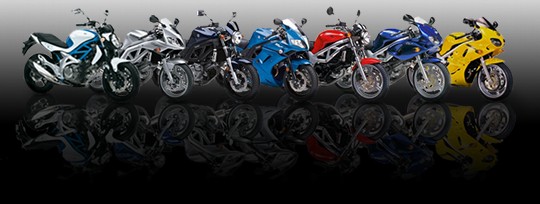 |
 |
|
|
#11 |
|
Guest
Posts: n/a
|
Yeah, we didn't communicate or execute TEC between us very well to be honest.
On the way to Bala, where Daryl was TEC, I came past Pete marking a right hand turn into a junction and waved to say thanks as I turned right. Pete thought I was waving him on and rode after me then overtook, not his fault, just that we didn't have a system defined when we left Shrewsbury. Knowing I wasn't last and the junction was now unmarked I pulled a 'u' turn in the next farm entrance and blasted back up the road just in time to see Raving Davis miss the junction, turned left to chase him down and 'u' turn him round, and got back to the junction just in time to stop Melody coming the other way, who just missed the junction and had to 'u' turn as well. Gathered everyone at the junction and realised we had lost UKI. He had seen me from a few hundred yards back trying to point Melody down the right turn before she missed it, and taken it as an instruction to turn right down an earlier turning, also signposted Bala. Daryl knew these roads merged, so we arranged second man drop off with me leading and Daryl TEC, and found UKI waiting at the next junction. Caught up with the rest of the party waiting for us at Bala. This had happened because we didn't have a defined marker system at that point. There was another occasion before lunch (I think Portmahog) I ended up at the back and waved two markers on, because although I found myself at the back, and I was 95% sure I was at the back, I wasn't nominated TEC and those markers would have sat there all day waiting for TEC, just like Claire did when she was left behind. After that I had to do a forward recce to check everyone was in front of me and confirm the 5% of doubt I had in my mind that I was actually last and didn't need to go and recover anybody (so if I came blasting past you it wasn't 'cos I was being an idiot, I was getting to the front to check that I had seen the right number of bikes in the group and we weren't missing anyone). This had happened because either we didn't have a nominated TEC at that point (I don't know), or the TEC had allowed himself to work forwards in the rideout through a town, by passing markers, but then not stopping and inviting them past him in order to stay at the back. So if we had a TEC he was 3 or 4 riders from the back, with the markers he had passed in behind him, but front of me, and this left me at the very back. Really we should carry a hi-viz for the TEC to wear. I think I might put "TEC" in big black lettering on one of mine, for use on rideouts when I'm TEC and for anybody else who might want to borrow it. The other thing I said at the petrol station when Claire was lost, is maybe somebody should have gone back with Mike, when he went to look for Claire. If got forbid he had had to pull her bike out of a hedge, etc. The are a whole bunch of scenarios when an extra pair of hands might have come in handy. Also when your looking for a lost rider, you often get presented with a choice at a junction where they could have gone wrong. Did they go that way by mistake, or are they still further back up the route somewhere, and you have to make a judgement call over which way you are going to go in your search for them. If you have 2 or 3 riders, you can leave one rider behind at that junction, take the wrong turning and go hunting for them, and if the lost rider are still further back along the route, eventually they'll come across the rider you've left behind, whilst you are away barking up the wrong tree. Last edited by -Ralph-; 24-03-10 at 12:46 AM. |

|
|
|
#12 | |
|
Guest
Posts: n/a
|
Quote:
Last edited by -Ralph-; 24-03-10 at 12:28 AM. |
|

|
|
|
#13 |
|
Guest
Posts: n/a
|
They are written, but there is no set of "rules" as such. We are all adults. There is more than one type of marker system in operation across the org anyway, drop off, second man drop off, nominated markers, and if there is just three or four of you out of a Sunday afternoon, you don't really need a marker system.
|

|
|
|
#14 |
|
Member
Join Date: May 2006
Location: Newcastle
Posts: 872
|
indeed we are all adults but some adults like me don't know this stuff and would like to learn but tbh, by the sound of it from all of the above, a ride out doesn't sound fun
|
|
|

|
|
|
#15 |
|
Guest
Posts: n/a
|
Hey don`t let it put you off.... believe me rideouts are great fun and if rules are given in advance of us all setting off there shouldn`t be any problems with lost riders etc. The marking system and TEC are vital to the smooth running and is extremely easily picked up as it`s not rocket science.
If you allow a minor setback on what was the first big rideout of the season to put you off then you`re gonna be a missing out on a whole lot of fun. |

|
|
|
#16 |
|
Guest
Posts: n/a
|
I think a briefing has to be the way to go - even if you outright say that you're using a particular system, there are little variations which are worth mentioning (do you mark roundabout exits even when going "straight", does the TEC allow you in in front or expect you to join behind and pass them and so on).
That also gives you an opportunity to say where you will be stopping to regroup, if required, and where you're taking breaks at on longer rides. You can then get an idea if there are any people who aren't confident with your version of the system and fill in the details. I think that covers all the issues I can remember seeing on rideouts... |

|
|
|
#17 | |
|
Guest
Posts: n/a
|
Quote:
The comments made above about the TEC, marking etc are just tweaks that can be made for next time. Most, if not all the people on Sunday would have known the 'protocol', but as Christopher has said with it being the first real group ride of the season for a lot of the attendees and maybe an assumption on all parts that people knew who was doing what it fell down slightly. It certainly didn't spoil the day though I'm sure (for me it definitely didn't). I can't speak for everyone (but i'm sure he covered everyone), but Ed did provide a 1-1 description of the next leg at every stop. I particularly remember his and Skeetly's comments of the long left hander at the top of the lake before Trawsfynnd before we left Bala. What a corner that is |
|

|
|
|
#18 | ||
|
Member
Mega Poster
Join Date: Mar 2007
Posts: 9,096
|
Quote:
Quote:
__________________
We're riding out tonight to case the promised land Make everyday count RIP Reeder - Jolly Green Giant and comedy genius |
||
|
|

|
|
|
#19 |
|
Guest
Posts: n/a
|
|

|
|
|
#20 | |
|
Guest
Posts: n/a
|
Quote:
The other thing I often do when leading, on large roundabouts, roundabouts with lots of exits, or roundabouts with foliage or another obstruction that you can't see over the top of, is drop a marker at the entrance to the roundabout who watches where I go and waves people in the general direction I have taken, and another marker at the exit to give a definitive direction. |
|

|
 |
|
|
 Similar Threads
Similar Threads
|
||||
| Thread | Thread Starter | Forum | Replies | Last Post |
| Abersoch 21st March (Sunday) | Ed | The Border Patrol | 173 | 24-03-10 04:04 AM |
| Abersoch/Barmouth 2 21st March | Ed | Rideouts & Meetings | 1 | 08-03-10 03:20 PM |
| North Wales (Wakestock + Abersoch) | jamesterror | Idle Banter | 0 | 13-07-09 12:14 AM |
| need help and comments | Shinsei Jutsu | Bikes - Talk & Issues | 4 | 05-07-06 06:29 AM |
| Rideout! Comments! Notes! and other stuff! | Topaz | 2005 Annual Rideout | 125 | 08-06-05 11:53 AM |